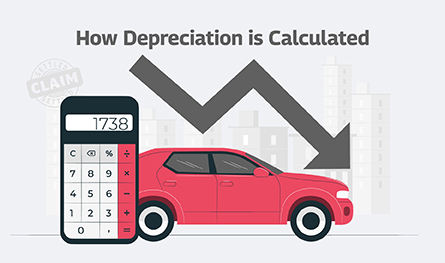RPLI and PLI Maturity Calculator – Premium Calculation of Postal Life Insurance (PLI) and Rural Postal Life Insurance (RPLI) Plans

RPLI or Rural Postal Life Insurance Plans are introduced with the primary objective of providing insurance coverage to the rural public. The plan aims to benefit the economically weak sections of the society and women workers in the rural areas. Learn more about the RPLI plan and its benefits in this post. Read on!

- About Rural Postal Life Insurance
- Types of PLI and RPLI Calculators
- The Maturity Calculators of PLI and RPLI Plans
- RPLI Maturity Calculator
- Factors Considered by the RPLI Calculator
- How to Use the Rural Postal Life Insurance Calculator?
- PLI Maturity Calculator
- Factors that Affect PLI And RPLI Plans Premiums
- Details you Need to Calculate the Premiums of PLI and RPLI Plans
- Why Should You use PLI and RPLI Calculators?
Maturity Calculation of Postal Life Insurance (PLI) and Rural Postal Life Insurance (RPLI) Plans with Premium 2025 through Calculator
The government of India takes care of its employees and their respective families by introducing schemes from time to time. PLI and RPLI are two such schemes run by the Indian Post Office for the welfare of its employees. PLI stands for Postal Life Insurance and RPLI is the abbreviated form of Rural Postal Life Insurance. While the former is essentially designed for the overall welfare of the employees of the Indian postal department specifically, the latter is exclusively meant for the wellbeing of the rural population.
This is because the rural sections of our society are still largely untouched by term life insurance benefits. Hence, to bring them into the coverage arena, RPLI plans are designed for the rural public, also because post offices seem to enjoy wider coverage in these sections of the country. Now, Iit is important to use tools such as a PLI calculator or an RPLI calculator to find out how much you can gain financially from such a policy.
About Rural Postal Life Insurance (RPLI)
The government came up with the RPLI scheme in India to specifically provide insurance benefits to the economically weaker and rural sections of the society. This is after the government realized in 1993 that the rural sector of the country remained uncovered by insurance.
The idea of introducing insurance to this segment of the society via post offices immediately appealed to the government, considering that postmasters enjoyed an excellent rapport with the rural population already. Hence, it was inevitably easier to convince the rural people towards buying insurance through the post offices. As such, the RPLI plan came into force.
Life Insurance plans under Rural Postal Life Insurance
Here are some life insurance plans offered by Postal Life Insurance:
| Plan Name | Plan Type | Features |
|---|---|---|
| Santosh | Endowment plan |
|
| Suvidha | Convertible whole life plan |
|
| Suraksha | Whole life plan |
|
| Sumangal | Money-back plan |
|
| Yigal Suraksha | Joint life endowment plan |
|
| Bal Jeevan Bima | Child plan |
|
You can use the postal life insurance calculator to estimate the amount that you can invest to receive the desired returns as per your need.
Who is eligible to buy RPLI and PLI plans?
Any citizen of India who works in any of the government organizations listed below can purchase PLI, RPLI insurance plans:
- If you work under Central or State Government
- If you are employed with para-military forces or defense services
- If you work for RBI or Reserve Bank of India
- If you are engaged in employment with the local bodies
- If you work for any government education institutions
- If you are employed with any public sector companies
- If you work for a financial institution
- If you are employed with autonomous bodies
- If you are an employee of a nationalized bank
- If you are an employee of a scheduled commercial bank
- If you work for the co-operative societies
- If you are an employee working in a deemed university
- If you are employees working in NSE/BSE listed companies in particular sectors
Also, for RPLI insurance plans, the investor must be an Indian citizen and a permanent dweller of a rural area.
Types of PLI and RPLI Calculators
Now, these calculators can be of two types – one is supposed to help you calculate the amount you would receive at maturity in both these policies, and the other one is meant to assist you in calculating how much premium you would have to pay for these policies. Let us now understand both these calculators in greater detail.
RPLI and PLI calculators
There are two types of PLI and RPLI calculators, namely RPLI and PLI maturity calculator and RPLI and PLI insurance premium calculator.
PLI and RPLI maturity calculator
Under the RPLI plans, the insured can ask for maturity benefits in case he/she survives the policy term. The SI or sum insured of an RPLI is fixed at the time of buying the policy by the policyholder as per his/her requirement. Since the bonus offered under these plans keeps changing, you may not get the exact RPLI calculator maturity amount using the tool. However, the investors can use their exact sum insured amount and track the final maturity amount as per the updated bonus rates. Generally, the bonus rates are declared as per 1000 sum assured.
RPLI premium calculator
The RPLI calculator post office is an online tool that is used to estimate the premiums that an insured has to pay to avail the benefits of a plan. You can use this tool as many times as you want to estimate the premium rates by changing policy terms, sum assured, premium payment terms, etc. This way, you can ensure to avail the right life insurance coverage that fits your budget and requirements. You can use the RPLI premium calculator by visiting the RPLI official website and India Post mobile app.
The Maturity Calculators of PLI and RPLI Plans
When both the PLI (postal life insurance) and RPLI (rural postal life insurance) policies mature you get the sum assured guaranteed by the policy along with the bonuses that have accrued on the same.
Since in these policies the bonus is not fixed or guaranteed it is not possible to calculate the money you would receive in advance even if you use a postal life insurance calculator.
RPLI Calculator Maturity Amount – The Maturity Premium Calculator for Rural Postal Life Insurance (RPLI) Policies
There is no specific rural postal life insurance calculator that helps you calculate the premium that you have to pay for these policies. However, you do get premium tables that you can use to get a good idea of the premium that you would have to pay in these policies.
So, in one way, you get the information that you may have expected from an RPLI maturity calculator in 2025. Please remember that the premium tables are different for individual policies. Below we would look at the premium tables for the Gram Sumangal and Gram Suvidha policies.
RPLI Premium Calculator Table for Gram Suvidha Policy of a Sum Assured of 1 Lakh Rupees
Following is the premium table for the Gram Suvidha policy with a sum assured of one lakh rupees:
| Age of entry | Monthly premium in INR for every 1000 rupees if the policy is changed to an endowment policy | Monthly premium in INR for every 1000 rupees if the policy is not changed and matures when the policyholder is 60 years old |
|---|---|---|
| 30 years | 205 | 305 |
| 35 years | 250 | 395 |
| 40 years | 325 | 535 |
| 45 years | 440 | 80 |
RPLI Premium Calculator Table 2025 for Gram Sumangal Policy of a Sum Assured of 1 Lakh Rupees
Following is the premium table for the Gram Sumangal policy with a sum assured of one lakh rupees:
| Age of entry | Monthly premium in INR for every 1000 rupees with a term period of 15 years | Monthly premium in INR for every 1000 rupees with a term period of 20 years |
|---|---|---|
| 30 years | 660 | 500 |
| 35 years | 665 | 510 |
| 40 years | 675 | 530 |
Factors Considered by the RPLI Calculator
The following factors are taken into consideration when computing premium as per the RPLI calculator:
- The term of the plan, as selected by the policyholder
- The age of the policyholder
- The age at which the premium ceases to be paid
- The name of the plan purchased by the policyholder
- The total sum assured under the plan
How to Use the Rural Postal Life Insurance Calculator?
The easiest way to use the RPLI calculator for premium calculation purposes is by visiting the India Post website, www.indiapost.gov.in. Here are the steps to follow on the website for using the RPLI calculator:
- Click on Postal Life Insurance on the above website.
- Click OK. You will now be redirected to an external website.
- Select Purchase a Policy on the website.
- Now click Quote.
- You will be asked to fill in some details such as your date of birth, contact details, type of product, occupation, sum assured, gender, name of the insurance scheme (RPLI, in this case), and state of residence. Fill out all the information correctly.
- Now fill out the image captcha.
- Click on Get Quote.
- You can now get results for the premium rate for RPLI for various terms, such as monthly, quarterly, half-yearly, and yearly.
- Consider the premium rates carefully before proceeding with policy purchase.
PLI Maturity Calculator 2025 – The Maturity Premium calculator for Postal Life Insurance (PLI) Policies
Come – let us take a look at the PLI maturity calculator 2025 now.
Just as there is no specific calculator for the RPLI policies you do not have any dedicated Postal Life Insurance interest rate calculator as such. However, just like those policies you have a premium table for the PLI policies as well. Once again the premium that you pay in this case depends on the policy that you have bought.
PLI Premium Calculator Table 2025 for Gram Santosh Policy of a Sum Assured of 1 Lakh Rupees
Below we would take a look at the premium tables for the Sumangal and Santosh policies. Following is the premium table for the Santosh policy with a sum assured of one lakh rupees:
| Age of entry | Monthly premium in INR for every 5000 rupees with a maturity age of 50 years | Monthly premium in INR for every 5000 rupees with a maturity age of 60 years |
|---|---|---|
| 30 years | 400 | 260 |
| 35 years | 560 | 320 |
| 40 years | 860 | 420 |
| 45 years | 1740 | 580 |
PLI Premium Calculator Table 2025 for Gram Sumangal Policy of a Sum Assured of 1 Lakh Rupees
Following is the premium table for the Sumangal policy with a sum assured of one lakh rupees:
| Age of entry | Monthly premium in INR for every 5000 rupees with a maturity age of 15 years | Monthly premium in INR for every 5000 rupees with a maturity age of 20 years |
|---|---|---|
| 19-36 years | 660 | 500 |
| 37-42 years | 680 | 520 |
| 43-45 years | 700 | 540 |
The Factors that Affect PLI and RPLI Plans Premiums 2025
So, from the PLI premium table, you would have had a fair idea of the premium structure of these policies. Now, you need to know the factors that affect these premiums, and they may be enumerated as below:
- your age
- the type of policy that you have chosen
- the term you have selected
- the mode in which you would pay the premium
- the sum assured you have chosen
Always remember that the older you are when you buy the policy the higher would your premium be. If you go for a higher term you would have to pay a lower premium.
If the sum assured is higher you would have to pay a higher premium. As you would have seen already certain policies carry higher premium rates than others.
The Details that you Need to Calculate the Premiums of Postal Life Insurance (PLI) and Rural Postal Life Insurance (RPLI) Plans
Now you may be thinking about the details that you would require for using the PLI premium calculator. Well, you would have to use the very factors that we have mentioned above. Once you have all these details you should be able to use the premium tables for the policies and calculate the premium that you would have to pay in these cases.
Why Should You use PLI Calculator and RPLI Calculator?
There are several reasons why using a postal life insurance premium or rural postal life insurance calculator is beneficial for you. First of all, it helps you understand the premium that you have to pay for these policies. This means that you have a clear idea of how much such a policy would cost you. This, in turn, helps you make space in your budget for the premium amount. This way, you can also choose the most appropriate and affordable coverage for yourself. Such usage also helps you compare the prices of these policies with other policies being sold in the market.
Steps to Access the Premium Tables
Here are the steps to access the premium tables:
- Visit the official portal of Rural Postal Life Insurance at www.indiapost.gov.in
- Go to the ‘Premium Table’ tab
- Click on the tab to open the PDF of your preferred RPLI Policy
- The maturity benefit details are available in the payment of benefits section
What are the Key Features and Benefits of the RPLI Calculator?
- The RPLI calculator is used to estimate the premium of the RPLI scheme depending on the sum assured of the plan
- Being an online tool, the RPLI calculator is easy to use and is cost-effective
- The RPLI calculator is a user-friendly tool that can be used without any expert help. All you need is to submit your details to calculate the premium amount
- The calculator offers you enough flexibility to revise the premium amount by increasing or decreasing the sum assured
How to Use the RPLI Premium Calculator? – Example
Let’s take an example to understand how to use the RPLI calculator:
Kaveri is a farmer from a village in Andhra Pradesh. She was planning to buy an RPLI – Gram Santosh, the Endowment Assurance Plan – for her family. The plan is available with a sum assured of INR 50,000 that the insured can avail at the time of maturity at 40 years of age.
She can use the RPLI calculator to estimate the premium options to be paid under the plan. She submits her details in the RPLI calculator online to get the premium quote:
Monthly Quote – INR 713
Quarterly Quote – INR 2132
Half Yearly Quote – INR 4251
Annual Quote – INR 8454
The calculator will provide the premium details at maturity for the same age with options of increased sum assured. This information can be used by Kaveri to decide on the plan that is most suitable for her family.
FAQs: PLI Calculator, RPLI Premium and Maturity Calculator 2025
The key difference between PLI and RPLI is with regards to its sum assured. The sum assured in PLI is above Rs. 1 lakh and for RPLI it is above Rs. 25,000 with proposer's age being the same in both the cases at 35 years.
To check RPLI policy status, you can contact at toll free number 1800 180 5232/155232.
Below are the Best Rural Postal Life Insurance (RPLI) Plans in India:
# Whole Life Assurance (Gram Suraksha)
# Endowment Assurance (Gram Santosh)
# Convertible Whole Life Assurance (Gram Suvidha)
# Anticipated Endowment Assurance (Gram Sumangal)
# 10 Years Rural PLI (Gram Priya)
# Children Policy (Bal Jeevan Bima)
Below are some of the RPLI benefits:
# 100% security as offered by the Government.
# You get a high bonus by paying a low premium payment.
# You can take out a loan against the policy.
Both the policies have their best features and both are backed by the government. The premium rate of PLI is cheap as compared to LIC. Hence, this is the best advantage of PLI over LIC, especially if you buy an endowment plan. In terms of bonus, PLI offers about a 7% bonus rate, while it is 4% to 5% for LIC at present. So, these features give PLI an upper hand as compared to LIC.
Here again, both the policies have their own benefits and are offered by the post office. PPF serves the purpose of investment and tax, while PLI is the best endowment plan offering a high bonus rate at a low premium. PPF is a long term investment plan and cannot be bought for short duration, while the PLI can be taken for short durations as well.
To calculate the maturity benefit of PLI and RPLI, you need to submit details such as Sum Assured, name of the policy and policy purchase year, the age of the individual at the time of calculating the maturity and the maturity age of the insured.
The bonus for RPLI has been declared at Rs. 48 per 1000 sum assured per annum.
The present rate of interest is 10% payable every 6 months.
There are a number of reasons that suggest that RPLI schemes are generally more popular among customers than LIC. The premium rate, for example, for PLI plans is generally lower and more affordable than the one offered by LIC. Similarly, the bonus rate for PLI or RPLI is generally around 7% or higher while LIC offers only 4-5% of bonus to its policyholders currently.
The minimum sum insured under PLI plans is INR 20,000, while the maximum sum insured is INR 50 lakhs. But there is an exception under the Bal Jeewan Beema plan, which offers a maximum sum insured of INR 3 lakhs.
No, generally people residing in rural areas are only eligible to avail themselves of the RPLI schemes.
Under the RPLI schemes, one can obtain a maximum of INR 5.5 lakhs
Loans under PLI are available with a 10% interest rate, which is charged at an interval of every 6 months.

Author Bio
Paybima Team
Paybima is an Indian insurance aggregator on a mission to make insurance simple for people. Paybima is the Digital arm of the already established and trusted Mahindra Insurance Brokers Ltd., a reputed name in the insurance broking industry with 17 years of experience. Paybima promises you the easy-to-access online platform to buy insurance policies, and also extend their unrelented assistance with all your policy related queries and services.
Latest Post
So, you’ve crossed the fabulous 60 mark. Retirement may be on the cards, your kids might be off doing their own thing, and suddenly your knees are making more noise than your WhatsApp notifications. Welcome to the senior citizen club.
Now let’s talk about something most of us tend to postpone until a doctor gives us a reality check: health insurance. If you are wondering whether buying health insurance after 60 makes sense, the answer is a loud and clear yes. This article will cover everything you need to know about it, how it makes sense, how it differs from health insurance for young adults, and what you need to look out for when checking for medical insurance above the age of 60.

.png)
April 2 is observed as World Autism Awareness Day and there is no better way to observe the day than to raise awareness of this condition and to promote kindness towards autistic people. Read on to know more.


Car depreciation implies the difference between the cost of a car at the time of buying the car and when you sell it. A car insurance claim amount is determined by the car depreciation rate. The car depreciation rate is the reduction in the value of your car over its lifespan caused by wear and tear.


Fixed Deposits (FDs) are one of the safest ways to grow your savings. HDFC Bank offers attractive FD interest rates, allowing you to earn guaranteed returns on your investment. But before you invest, it's important to know how much interest you will earn and what your final maturity amount will be.


If you think of life insurance, chances are you are picturing something people buy in their 30s or 40s. But what if you are 65 or older and just getting started? The good news is that you are never too late. Whether you are thinking of easing the financial burden on your family, covering final expenses, or simply leaving behind a legacy, there are life insurance options tailored just for you.
This article will be a guide to life insurance for senior citizens above 65 years, explaining why it is important, the type of insurance options, and how to get the right policy for you.




